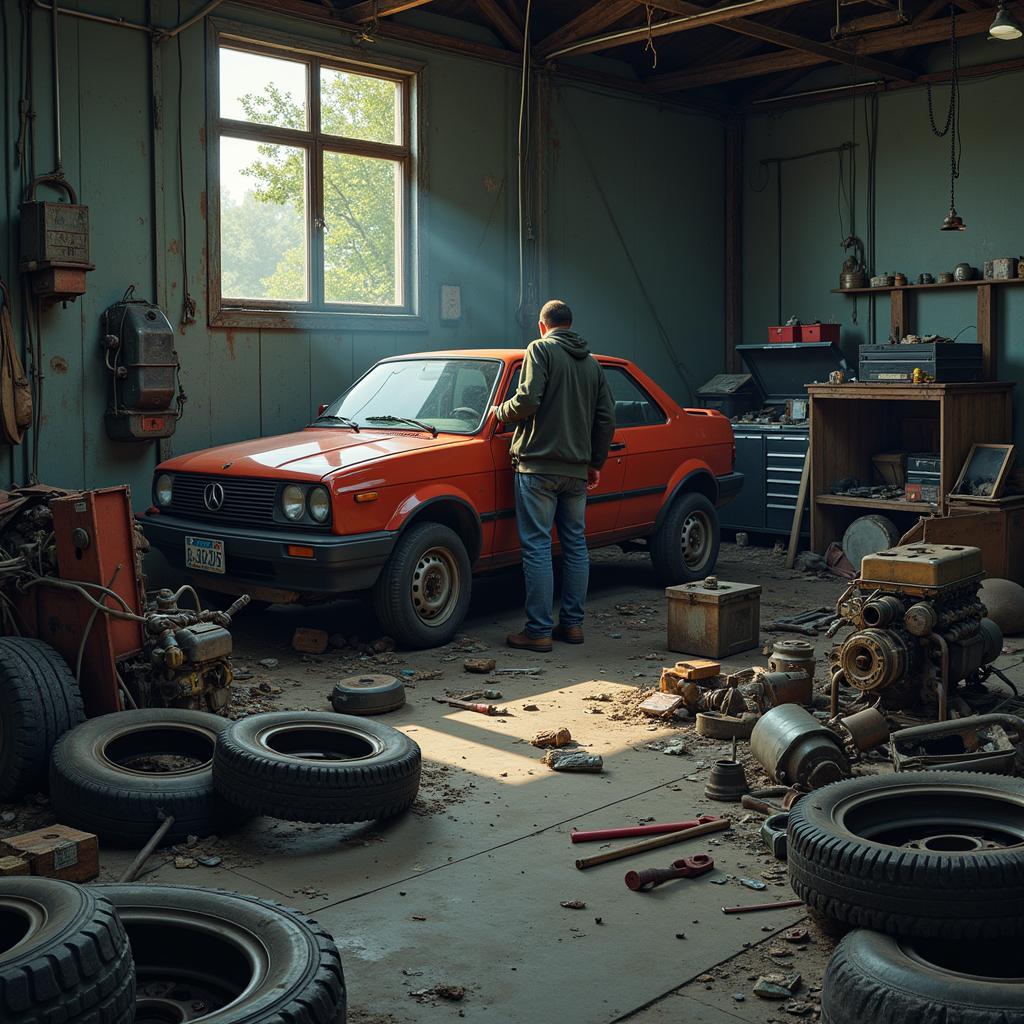A broken mudguard isn’t just an eyesore; it can also lead to further damage and safety issues. Knowing how to fix a broken car mudguard can save you a trip to the mechanic and keep your car looking its best. This guide will walk you through various repair options, from simple DIY fixes to more complex replacements, helping you get back on the road with a fully functional and aesthetically pleasing mudguard.
Understanding Your Mudguard Damage
Before you start fixing your broken mudguard, it’s important to assess the damage. Is it a minor crack, a large split, or is the entire mudguard detached? The extent of the damage will dictate the repair method. A small crack might be repairable with epoxy or plastic welding, while a severely damaged mudguard likely requires replacement.
Identifying the Type of Mudguard
Mudguards are typically made of plastic or metal. Knowing the material will help you choose the right repair materials and techniques. Plastic mudguards are more common and generally easier to repair, while metal ones might require welding or specialized tools.
DIY Mudguard Repair Options
For minor cracks or small breaks in plastic mudguards, a DIY approach is often feasible and cost-effective. Here are some common methods:
-
Using Epoxy or Plastic Weld: Clean the area around the crack thoroughly and apply epoxy or plastic weld following the manufacturer’s instructions. Allow it to dry completely before sanding and painting.
-
Using Repair Tape: Specialized repair tape for automotive plastics can provide a quick and easy fix for small cracks or holes. Clean the area, apply the tape, and trim any excess.
-
Using Zip Ties (for temporary fixes): For a temporary fix, especially if the mudguard is partially detached, you can use zip ties to secure it in place until a more permanent repair can be made.
“A simple crack can often be fixed with epoxy or plastic welding,” advises John Davis, Automotive Engineer at Autotippro. “However, for larger breaks or if the mudguard is severely damaged, replacement is usually the best option.”
When to Replace Your Mudguard
Sometimes, the damage is too extensive for a DIY repair. Signs that you need a new mudguard include:
- Large cracks or splits
- Missing pieces
- Significant warping or deformation
- Rust or corrosion (for metal mudguards)
How to Replace a Car Mudguard
Replacing a mudguard involves removing the old one and installing a new one. This process might require some basic tools and mechanical knowledge. The specific steps can vary depending on the make and model of your car.
- Gather your tools: You’ll typically need screwdrivers, wrenches, and possibly a drill.
- Remove the old mudguard: Locate and remove the screws or bolts holding the old mudguard in place.
- Install the new mudguard: Align the new mudguard and secure it using the appropriate screws or bolts.
“Replacing a mudguard is a relatively straightforward process, but if you’re unsure, it’s always best to consult a professional,” says Maria Sanchez, Lead Mechanic at Autotippro. “They can ensure the job is done correctly and prevent any further damage to your vehicle.”
Preventing Future Mudguard Damage
While some mudguard damage is unavoidable, you can take steps to minimize the risk:
- Avoid driving over curbs or rough terrain.
- Park carefully to avoid scraping against objects.
- Regularly inspect your mudguards for signs of wear and tear.
Conclusion
Fixing a broken car mudguard is a task that can often be tackled with a DIY approach, depending on the extent of the damage. From using epoxy for small cracks to replacing the entire mudguard, this guide has provided you with the knowledge to make the best decision for your car. Remember to prioritize safety and seek professional help if you’re unsure about any step. For expert assistance or further guidance, connect with AutoTipPro at +1 (641) 206-8880 or visit our office at 500 N St Mary’s St, San Antonio, TX 78205, United States.
FAQ
- Can I drive with a broken mudguard? While it’s not illegal in all areas, a broken mudguard can pose safety risks and lead to further damage. It’s best to repair or replace it as soon as possible.
- How much does it cost to replace a car mudguard? The cost varies depending on the make and model of your car and whether you do it yourself or hire a professional. DIY repairs can cost as little as a few dollars for materials, while professional replacement can range from $50 to $200 or more.
- Where can I buy replacement mudguards? Auto parts stores, online retailers, and dealerships sell replacement mudguards.
- What tools do I need to replace a mudguard? Common tools include screwdrivers, wrenches, and possibly a drill.
- How long does it take to replace a mudguard? DIY replacement typically takes 1-2 hours, while a professional can usually do it faster.
- Can I paint my mudguard after repairing it? Yes, you can paint a plastic mudguard after repairing it with epoxy or plastic weld. Make sure to use automotive paint and follow the manufacturer’s instructions.
- How do I prevent mudguard damage in the future? Avoid driving over curbs, park carefully, and regularly inspect your mudguards for signs of damage.





Leave a Reply